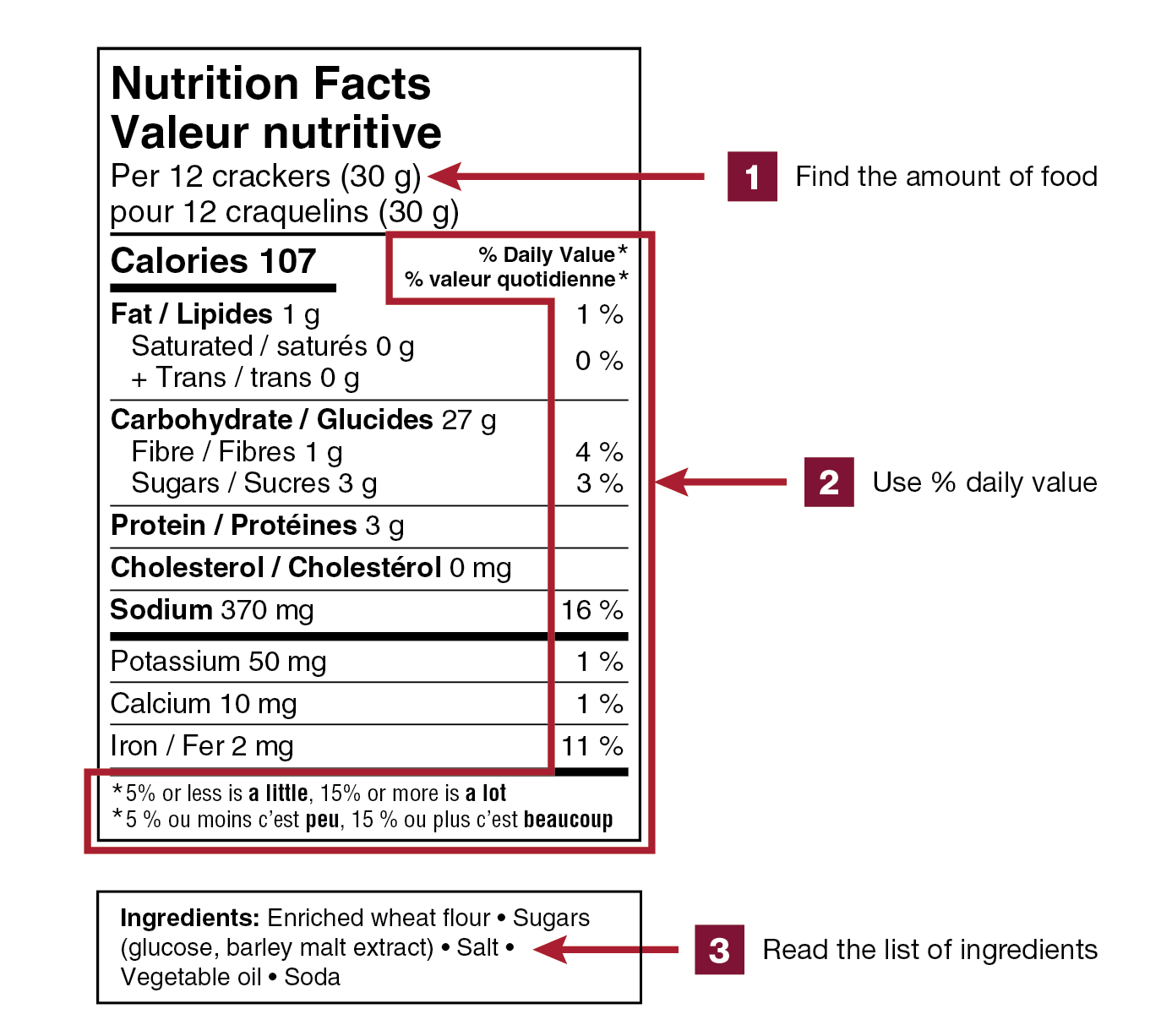Use these three steps to understand food labels
1. Find the amount of food:
The amount of food listed in the nutrition facts table is called serving size. The information in the nutrition facts table is based on this amount of food.
2. Use % daily value:
The % daily value (% DV) tells you if a food product has a little or a lot of a certain nutrient:
- 5% DV or less is a little
- 15% DV or more is a lot
3. Read the list of ingredients:
The list of ingredients lists all of the ingredients in a food product in order of weight. This means that the food product contains:
- more of the ingredients found at the beginning of the list
- less of the ingredients at the end of the list

Shown here is an image of a nutrition facts table and a list of ingredients. The nutrition facts table is positioned on top of the list of ingredients. There is explanatory text to the right of the table and ingredients list with arrows and corresponding numbers pointing to different elements of the nutrition facts table and list of ingredients.
Make a healthier food choice
When making a food choice or comparing two similar food products, choose those with less:
- sugars
- sodium
- saturated fats
Some nutrients you may want more of include:
- iron
- fibre
- calcium
- potassium
The nutrients you may want more of are often found in foods that do not have a nutrition facts table, such as many vegetables and fruits. Canada’s food guide recommends eating plenty of vegetables and fruits, whole grain foods and protein foods to help meet your nutrient needs.
Canada’s food guide also recommends:
- Limiting your intake of highly processed foods and drinks that add excess sodium, sugars or saturated fat to your diet.
- Using food labels to make healthier food choices.
References
Source: © All rights reserved. Canada’s Food Guide. Health Canada, modified 2024. Adapted and reproduced with permission from Health Canada, 2024. Available at: https://food-guide.canada.ca/en/tips-for-healthy-eating/use-food-labels-make-healthier-choices/



